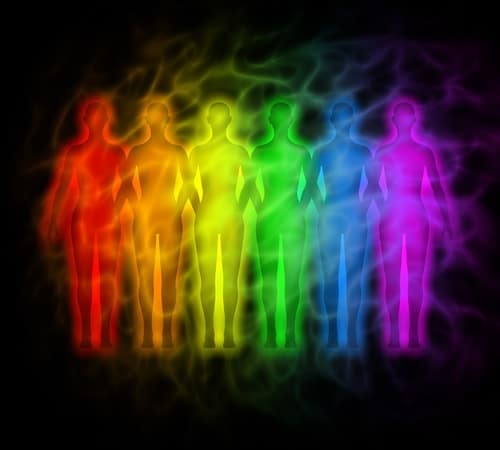Anyone who's seen The Two Ronnies “Four Candles” comedy sketch will understand the frustrations that can result from a lack of common understanding.
There are often times when it is as if we are speaking a different language to each other: we use the same words but the meanings we attribute to those words differ wildly. These differences are often just light-hearted and easily corrected misunderstandings. But communication problems also pose the risk of the development team building a product that is fundamentally different to what the customer wanted.
As with most professions, it's essential for developers to have good communication soft skills. In order to communicate effectively and efficiently with our colleagues and friends, we need to understand them and ourselves.
 To assist with communication, having an understanding of psychology can lead to working much more effectively with others and building stronger business relationships.
To assist with communication, having an understanding of psychology can lead to working much more effectively with others and building stronger business relationships.
Psychology is one of our newest sciences, but it grew out of the much older science of philosophy. Its origins can be traced back to ancient Greece, with great thinkers such as Socrates, Plato, and Aristotle.
There are several branches of psychology today, and the field we cover here is Analytical psychology, founded by Swiss psychiatrist Carl G. Jung in 1913. Eight years later, he published the book Psychological Types, which defined these types in terms of thinking, feeling, sensation, and intuition.
The American author Isabel Briggs Myers and her mother, Katharine Cook Briggs, used the work of Jung as a basis for developing a tool for classifying people into different types. This work took more than 20 years to develop and refine.
Today, the Myers-Briggs Type Indicator is the world's best known psychological test. Millions of people have taken it, and studies have shown it to be reliable. This test classifies people as:
- Extroversion or Introversion
To increase energy, those who gain it from other people and external activities are extroverted, whereas introverts gain it from internal processes and being on their own.
- Sensing or Intuitive
Those who take in information in a literal, pragmatic way are Sensing, whereas those who process it in an abstract, creative way are Intuitive.
- Thinking or Feeling
Thinking individuals focus on objectivity and rationality, prioritizing logic over emotions. Feeling individuals are sensitive and emotionally expressive, and focus on social harmony and cooperation.
- Judging or Perceiving
Those who prefer to follow set plans and maintain order are Judging, whereas those who prefer to stay flexible, adapting to the world, are Perceiving.
Many people are skeptical or wary about psychometric tests, linking them with scientifically dubious horoscopes and fortune cookies; however, psychology is a science with a rich history.
It is important to understand that there is no best type: each type tends to have different strengths and weaknesses, but it is not like an IQ test where some individuals come out as better than others. Also, your personality type is not set in stone. Although most people’s personality type remains the same, it is perfectly possible for it to change if you want it to.
It is common for businesses to ask new prospective employees to take these tests. They are not used for screening candidates, but rather they are used to gain a better understanding of the person’s strengths and weaknesses so that managers can work with them more effectively.

There are numerous analytical psychology tests available online, both free and paid for.
Both myself and my wife tried the test on 16 personalities, which is very similar to Myers-Briggs but free with no required sign up. We each answered 60 questions and read the results. Although there were a few statements that we didn’t feel described us, we were generally surprised by how accurate it was.
I came out as Introverted, Sensing, Thinking, and Judging. This personality type is labelled “Logistician.” This is fairly typical amongst software developers, although there are software developers of every personality type.
Programmer Psychology
Separate studies by Michael Lyons and Rob Thomsett agree that computer professionals are much more Introverted than the general population. Somewhere between one-half to two-thirds are introverted, whereas less than a third of the general population are.
The Myers-Briggs definition of introverted is having a greater interest in the inner world of ideas and mental processes than the external world of people and things.
Two thirds of us are more Judging than Perceiving, compared to half of the general population. Those who are more Judging live in a planned, orderly way, whereas Perceiving individuals are more flexible and adaptable.
The same surveys found that 80% of us prefer Thinking over Feeling, compared to half of the general population.
This has many advantages for programming: our preference for decision making on a logical and impersonal basis helps us to reason more clearly and code more correctly.
However, the belief that honesty is the best policy can unintentionally hurt more sensitive types’ feelings. Although Thinking types sometimes take emotions into consideration, it tends to be just to determine the most effective way to say what we believe needs to be said.
The Four Energy Colors
If you are interested in improving your organization’s effectiveness but 16 personality types are too many for you to sort through, Insights Discovery found a memorable simplification of the Myers-Briggs test. They took the Introverted-Extroverted and Thinking-Feeling categories, which are the most relevant to interpersonal behaviour, and assigned them colors:
Extroverted Thinking Is “Fiery Red”
Fiery red types are Positive, Affirmative, Bold, Assertive, Competitive, Decisive, Strong-willed and Demanding.
Extroverted Feeling Is “Sunshine Yellow”
Sunshine yellow types are Social, Dynamic, Demonstrative, Expressive, and Creative.
Introverted Feeling Is “Earth Green”
Earth green types are Still, Tranquil, Calming, Soothing, Sharing, Patient, Amiable, Caring, and Encouraging.
Introverted Thinking Is “Cool Blue”
Cool blue types are Cautious, Precise, Deliberate, Questioning, and Formal.
Approximately half of programmers are the Cool Blue personality type. They tend to be analytical and avoid bias.
These four colors are represented as a circle, with red opposite green and yellow opposite blue. Individuals with your “opposite” color tend to be those that you find most difficult to understand and communicate well with.
The reason a circle is used, rather than, say, a square, is even if we have the same energy color as someone else, we all vary by different degrees. Some people are neither strongly introverted nor extroverted. Others are no more or less Thinking than Feeling. We can think of these people as having a mixture of color energies.
This results in a total of eight different types that can all play a very important role within a team:
- Observer (blue, Introverted Thinking)
- Reformer (magenta, Thinking)
- Director (red, Extroverted Thinking)
- Motivator (orange, Extroverted)
- Inspirer (yellow, Extroverted Feeling)
- Helper (yellow-green, Feeling)
- Supporter (green, Introverted Feeling)
- Coordinator (turquoise, Introverted)
 How Can I Apply This?
How Can I Apply This?
The are two main areas where this knowledge can help you in almost every situation in your life:
understanding yourself, and understanding others.
Understanding Yourself
After you have taken the test, read through your strengths and weaknesses carefully. Your complete personality is more complex than any category can hope to describe exactly, so first assess which parts are the most accurate.
Most psychometric tests include percentages as well as the type. For example the results of creative programmer Steve Fenton include 58% Thinking and 69% Intuitive. The information regarding being an Intuitive type are likely to resonate with him more than the information regarding being a Thinking type.
Reading through your alleged weaknesses may be difficult, but being able to receive and adjust to criticism is essential in order to continually improve yourself.
Once you have assessed your results, consider whether there are any situations where you might gain better results by acting counter to your natural inclinations. For example, as an Introverted Thinker, I am inclined to try to solve all of the hard problems myself. However my results have reminded me that there are often times when it is more effective to collaborate with other team members.
Your results may also highlight strengths that you have that aren’t currently being utilised enough. Perhaps your colleagues never realised you had these strengths. If this is the case, it may be worth exploring how much extra you could bring to your organisation if your responsibilities changed.
Understanding Others
Hopefully you will gain benefit from the increased understanding of yourself and recommend it to others. Whether or not others which to take the test, and whether they wish to share their results is a personal decision for them. If they share their personality type with you, this can help you to understand their strengths and weaknesses and lead to a stronger relationship with them.

This will also lead to increased understanding of words and meanings. Chances are you’ll never be asked for “four candles” meaning “fork handles”, but you’ll begin to hear other words and understand them in the other person’s context instead of your own. At this point, you’ll have a communication skill to be very proud of.
Thank you for reading, and please add a comment below to share what your results have taught you. In my next article, I will build on this knowledge, covering the importance of creativity and ways in which you can become more creative.

 How Can I Apply This?
How Can I Apply This?